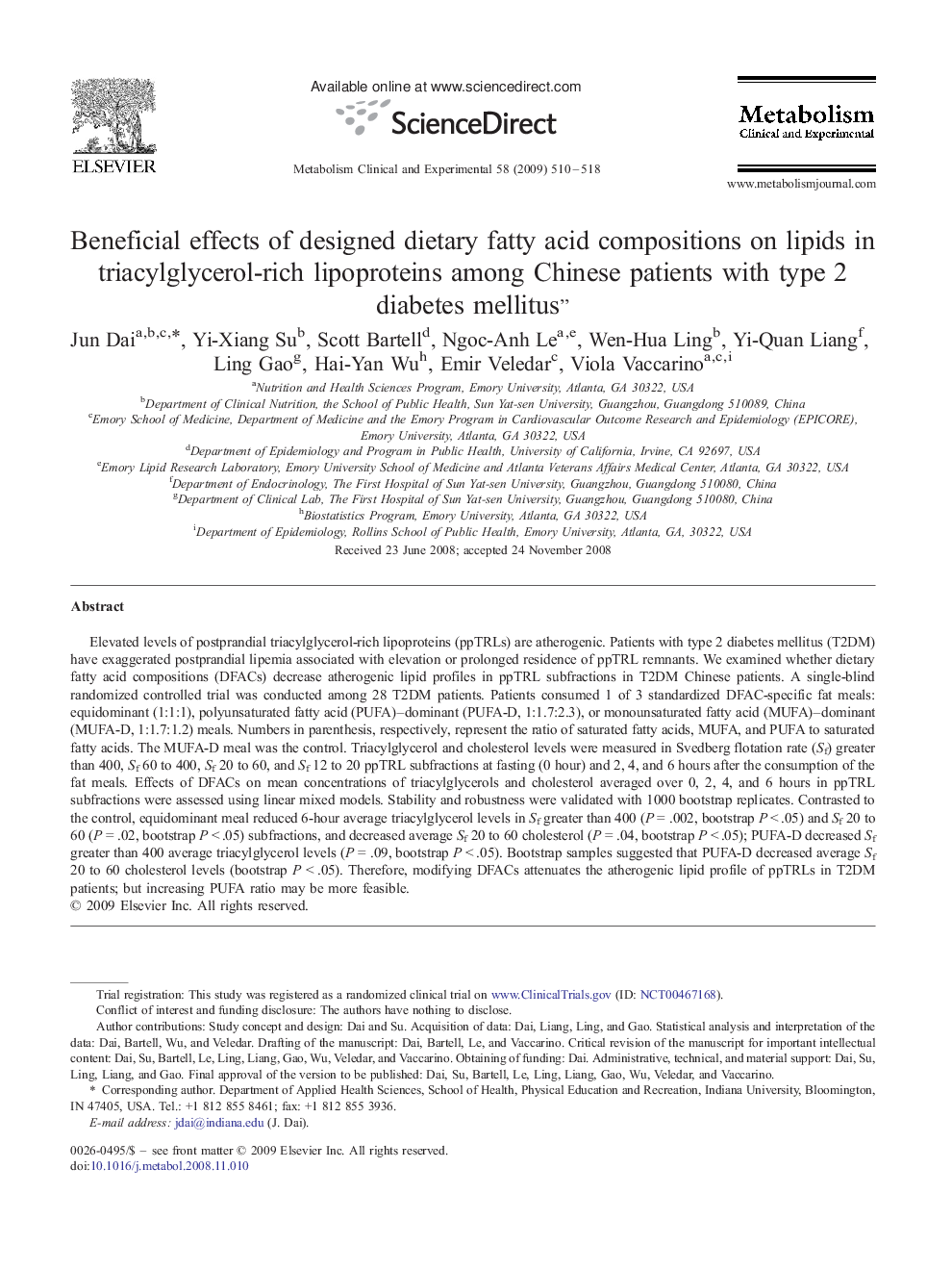| Article ID | Journal | Published Year | Pages | File Type |
|---|---|---|---|---|
| 2806448 | Metabolism | 2009 | 9 Pages |
Abstract
Elevated levels of postprandial triacylglycerol-rich lipoproteins (ppTRLs) are atherogenic. Patients with type 2 diabetes mellitus (T2DM) have exaggerated postprandial lipemia associated with elevation or prolonged residence of ppTRL remnants. We examined whether dietary fatty acid compositions (DFACs) decrease atherogenic lipid profiles in ppTRL subfractions in T2DM Chinese patients. A single-blind randomized controlled trial was conducted among 28 T2DM patients. Patients consumed 1 of 3 standardized DFAC-specific fat meals: equidominant (1:1:1), polyunsaturated fatty acid (PUFA)-dominant (PUFA-D, 1:1.7:2.3), or monounsaturated fatty acid (MUFA)-dominant (MUFA-D, 1:1.7:1.2) meals. Numbers in parenthesis, respectively, represent the ratio of saturated fatty acids, MUFA, and PUFA to saturated fatty acids. The MUFA-D meal was the control. Triacylglycerol and cholesterol levels were measured in Svedberg flotation rate (Sf) greater than 400, Sf 60 to 400, Sf 20 to 60, and Sf 12 to 20 ppTRL subfractions at fasting (0 hour) and 2, 4, and 6 hours after the consumption of the fat meals. Effects of DFACs on mean concentrations of triacylglycerols and cholesterol averaged over 0, 2, 4, and 6 hours in ppTRL subfractions were assessed using linear mixed models. Stability and robustness were validated with 1000 bootstrap replicates. Contrasted to the control, equidominant meal reduced 6-hour average triacylglycerol levels in Sf greater than 400 (P = .002, bootstrap P < .05) and Sf 20 to 60 (P = .02, bootstrap P < .05) subfractions, and decreased average Sf 20 to 60 cholesterol (P = .04, bootstrap P < .05); PUFA-D decreased Sf greater than 400 average triacylglycerol levels (P = .09, bootstrap P < .05). Bootstrap samples suggested that PUFA-D decreased average Sf 20 to 60 cholesterol levels (bootstrap P < .05). Therefore, modifying DFACs attenuates the atherogenic lipid profile of ppTRLs in T2DM patients; but increasing PUFA ratio may be more feasible.
Related Topics
Life Sciences
Biochemistry, Genetics and Molecular Biology
Endocrinology
Authors
Jun Dai, Yi-Xiang Su, Scott Bartell, Ngoc-Anh Le, Wen-Hua Ling, Yi-Quan Liang, Ling Gao, Hai-Yan Wu, Emir Veledar, Viola Vaccarino,
